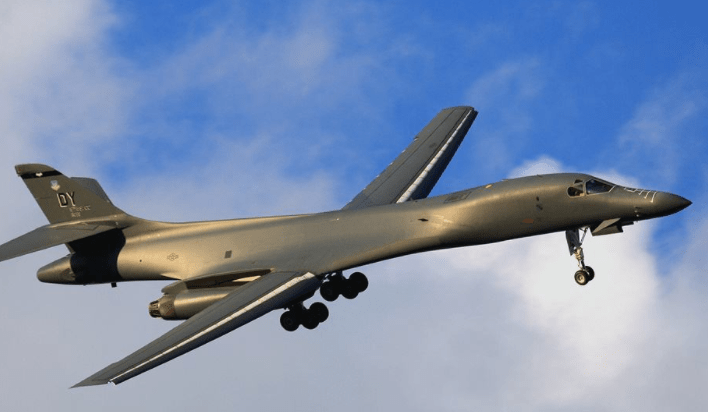In recent times, due to the US presidential election, the focus of the American public has been on Biden and Trump. The US military has also reduced the frequency of military operations, especially in the South China Sea, which has restored temporary calm. However, as the U.S. presidential election came to an end, the U.S. military’s overseas military activities gradually increased.
In particular, the strategic bombers of the US Air Force have recently begun to dispatch frequently. On November 3, multiple B-1B Lancer strategic bombers of the U.S. Air Force took off from Dyce Air Force Base in Texas, United States, and were deployed to the Guam Anderson Air Force in the Asia-Pacific region.
As soon as it arrived in the Asia-Pacific region, the B-1B Lancer strategic bomber went into actual operations without stopping. “Aircraft Watch”, a platform dedicated to recording the dynamics of military aircraft, announced on November 9 that on November 8, local time, two U.S. Air Force B-1B Lancers strategic bombers took off from Anderson Air Force Base in Guam and broke into the South China Sea again.
Airspace, perform combat readiness patrol missions. During the mission, he once flew to the airspace not far from the Nansha Islands. After circling the airspace of the South China Sea for a week, two B-1B Lancer strategic bombers returned to Anderson Air Force Base in Guam later in the day.

According to the flight route map published by the “Airplane Watch” platform, two B-1B Lancer strategic bombers departed from Anderson Air Force Base in Guam, flew all the way northwest, and then entered the South China Sea airspace through the Bashi Channel.
After completing a flight mission in the South China Sea, it turned southwest to southeast, and finally flew northeast through the Balabac Strait, the Sulu Sea, and the Sulawesi Sea before returning. It can be clearly seen that the B-1B “Lancer” strategic bomber patrolled a very wide area, covering the entire South China Sea airspace, and every place it passed was strategically important.

Unlike the reconnaissance aircraft frequently deployed by the U.S. military some time ago, the B-1B Lancer is the main strategic bomber of the U.S. Air Force and an important platform for U.S. space-based nuclear power projection. The B-1B Lancer strategic bomber has an ultra-long range of more than 10,000 kilometers and is capable of long-range attacks.
It can mount a variety of conventional bombs and nuclear bombs, and its bomb capacity can reach about 25 tons. In addition, the B-1B Lancer is the only bomber that can achieve supersonic flight among the three main U.S. Air Force bombers. It has excellent penetration capabilities, so it is more deterrent than ordinary reconnaissance aircraft.

It can be seen that the strategic deterrence of the US military against China is no longer concealed. Before the US presidential campaign, Trump had been playing the “China card” in an attempt to reverse the decline of the campaign. Even if Trump’s re-election fails, it does not mean that the United States has changed its position on China.
“Anti-China” and “controlling China” have become a common consensus in American politics. Regarding the recent activities of the U.S. Air Force around China, the Chinese side has made it clear that one is against it and the other is not afraid. The Chinese People’s Liberation Army will firmly safeguard national sovereignty, security, and development interests, and firmly safeguard world and regional peace and stability.




